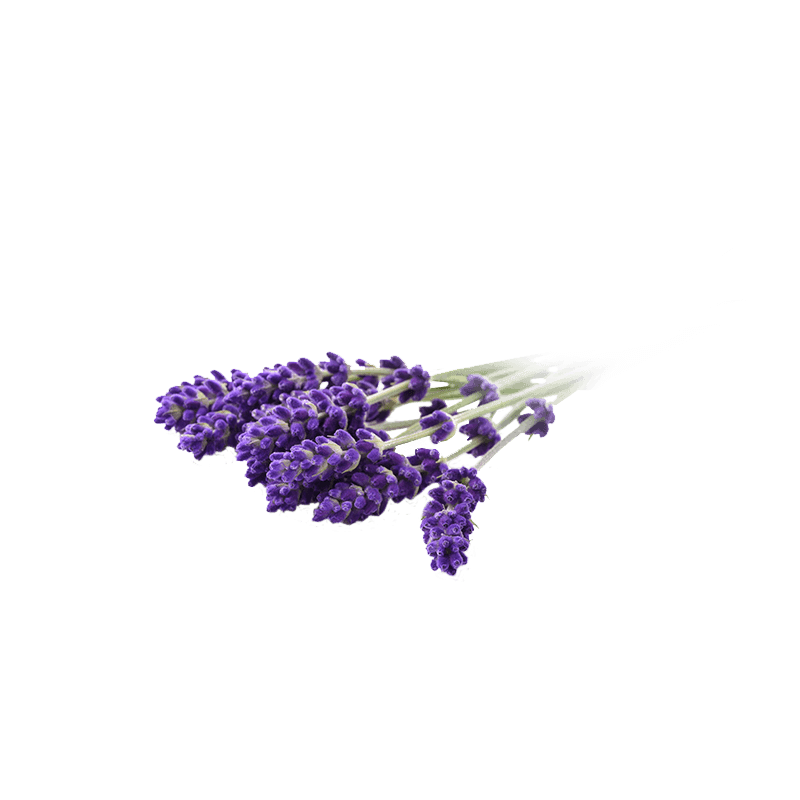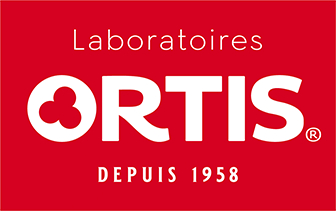
Lavandin
Latin name
Origin
Used part
Active components
Essential oils (linalool, linalyl acetate, camphor, eucalyptol): have pain relieving, anti-inflammatory, antiseptic and anxiolytic properties.
Phenolic acids (rosmarinic and chlorogenic acid): powerful, anti-inflammatory and calming action.
Flavonoids: antioxidant.
Anthocyanins: antioxidant.
Tannins: astringent properties.
Usage
Bibliographical references
- Composition and antipseudomonal effect of essential oils isolated from different lavender species.
Végh A, Bencsik T, Molnár P, Böszörményi A, Lemberkovics E, Kovács K, Kocsis B, Horváth G.
Nat Prod Commun. 2012 Oct;7(10):1393-6.
Pubmed: http://www.ncbi.nlm.nih.gov/pubmed/23157020 - Pressurized fluid extraction of essential oil from Lavandula hybrida using a modified supercritical fluid extractor and a central composite design for optimization.
Kamali H, Jalilvand MR, Aminimoghadamfarouj N.
J Sep Sci. 2012 Jun;35(12):1479-85.
Pubmed: http://www.ncbi.nlm.nih.gov/pubmed/22740257 - Potential application of aromatic plant extracts to prevent cheese blowing.
Librán CM, Moro A, Zalacain A, Molina A, Carmona M, Berruga MI.
World J Microbiol Biotechnol. 2013 Jul;29(7):1179-88
Pubmed: http://www.ncbi.nlm.nih.gov/pubmed/23417280 - Antimicrobial activity and chemical composition of some essential oils.
Aridoğan BC, Baydar H, Kaya S, Demirci M, Ozbaşar D, Mumcu E.
Arch Pharm Res. 2002 Dec;25(6):860-4.
Pubmed: http://www.ncbi.nlm.nih.gov/pubmed/12510839 - Multiresidue analysis of multiclass pesticides in lavandin essential oil by LC/MS/MS using the scheduled selected reaction monitoring mode.
Fillâtre Y, Rondeau D, Bonnet B, Daguin A, Jadas-Hécart A, Communal PY.
Anal Chem. 2011 Jan 1;83(1):109-17
Pubmed: http://www.ncbi.nlm.nih.gov/pubmed/21142025 - In vitro antimicrobial activity of essential oils from aromatic plants against selected foodborne pathogens.
Rota C, Carramiñana JJ, Burillo J, Herrera A.
J Food Prot. 2004 Jun;67(6):1252-6.
Pubmed: http://www.ncbi.nlm.nih.gov/pubmed/15222560 - Evaluation of antioxidant potential of Lavandula x intermedia Emeric ex Loisel. 'Budrovka': a comparative study with L. angustifolia Mill.
Blazeković B, Vladimir-Knezević S, Brantner A, Stefan MB.
Molecules. 2010 Aug 30;15(9):5971-87.
Molecules Open Access Journals: http://www.mdpi.com/1420-3049/15/9/5971 - Antioxidant activity and phenolic composition of Lavandin (Lavandula x intermedia Emeric ex Loiseleur) waste.
Torras-Claveria L, Jauregui O, Bastida J, Codina C, Viladomat F.
J Agric Food Chem. 2007 Oct 17;55(21):8436-43.
Pubmed: http://www.ncbi.nlm.nih.gov/pubmed/17927148 - Antiviral and Anti-Inflammatory Effects of Rosmarinic Acid in an Experimental Murine Model of Japanese Encephalitis
Vivek Swarup, Joydeep Ghosh, Soumya Ghosh, Amit Saxena, and Anirban Basu*
Antimicrob Agents Chemother. 2007 September; 51(9): 3367–3370.
PMC: http://www.ncbi.nlm.nih.gov/pmc/articles/PMC2043228/ - Biological activities of lavender essential oil.
Cavanagh HM, Wilkinson JM
Phytother Res. 2002 Jun;16(4):301-8.
Pubmed: http://www.ncbi.nlm.nih.gov/pubmed/12112282 - Anti-inflammatory effects of 27 selected terpenoid compounds tested through modulating Th1/Th2 cytokine secretion profiles using murine primary splenocytes.
Ku CM, Lin JY.
Food Chem. 2013 Nov 15;141(2):1104-13.
Pubmed: http://www.ncbi.nlm.nih.gov/pubmed/23790892 - Kuromoji (Lindera umbellata) essential oil inhibits LPS-induced inflammation in RAW 264.7 cells.
Maeda H, Yamazaki M, Katagata Y.
Biosci Biotechnol Biochem. 2013;77(3):482-6.
Pubmed: http://www.ncbi.nlm.nih.gov/pubmed/23470753 - Anti-inflammatory effects of linalool in RAW 264.7 macrophages and lipopolysaccharide-induced lung injury model.
Huo M, Cui X, Xue J, Chi G, Gao R, Deng X, Guan S, Wei J, Soromou LW, Feng H, Wang D.
J Surg Res. 2013 Mar;180(1):e47-54.
Pubmed: http://www.ncbi.nlm.nih.gov/pubmed/23228323 - Anti-inflammatory activity of linalool and linalyl acetate constituents of essential oils.
Peana AT, D'Aquila PS, Panin F, Serra G, Pippia P, Moretti MD.
Phytomedicine. 2002 Dec;9(8):721-6.
Pubmed: http://www.ncbi.nlm.nih.gov/pubmed/12587692 - Intraplantar injection of bergamot essential oil into the mouse hindpaw: effects on capsaicin-induced nociceptive behaviors.
Sakurada T, Kuwahata H, Katsuyama S, Komatsu T, Morrone LA, Corasaniti MT, Bagetta G, Sakurada S.
Int Rev Neurobiol. 2009;85:237-48.
Pubmed: http://www.ncbi.nlm.nih.gov/pubmed/19607974 - Antinociceptive and gastroprotective effects of inhaled and orally administered Lavandula hybrida Reverchon "Grosso" essential oil.
Barocelli E, Calcina F, Chiavarini M, Impicciatore M, Bruni R, Bianchi A, Ballabeni V.
Life Sci. 2004 Nov 26;76(2):213-23.
Pubmed: http://www.ncbi.nlm.nih.gov/pubmed/15519366 - The antinociceptive effect of (-)-linalool in models of chronic inflammatory and neuropathic hypersensitivity in mice.
Batista PA, Werner MF, Oliveira EC, Burgos L, Pereira P, Brum LF, Story GM, Santos AR.
J Pain. 2010 Nov;11(11):1222-9.
Pubmed: http://www.ncbi.nlm.nih.gov/pubmed/20452289 - (-)-Linalool attenuates allodynia in neuropathic pain induced by spinal nerve ligation in c57/bl6 mice.
Berliocchi L, Russo R, Levato A, Fratto V, Bagetta G, Sakurada S, Sakurada T, M
Int Rev Neurobiol. 2009;85:221-35
Pubmed: http://www.ncbi.nlm.nih.gov/pubmed/19607973 - Pain relief assessment by aromatic essential oil massage on outpatients with primary dysmenorrhea: a randomized, double-blind clinical trial.
Ou MC, Hsu TF, Lai AC, Lin YT, Lin CC.
J Obstet Gynaecol Res. 2012 May;38(5):817-22.
Pubmed: http://www.ncbi.nlm.nih.gov/pubmed/22435409 - Evidence for the involvement of ionotropic glutamatergic receptors on the antinociceptive effect of (-)-linalool in mice.
Batista PA, Werner MF, Oliveira EC, Burgos L, Pereira P, Brum LF, Santos AR.
Neurosci Lett. 2008 Aug 8;440(3):299-303
Pubmed: http://www.ncbi.nlm.nih.gov/pubmed/18579302 - Profile of spinal and supra-spinal antinociception of (-)-linalool.
Peana AT, De Montis MG, Nieddu E, Spano MT, D'Aquila PS, Pippia P.
Eur J Pharmacol. 2004 Feb 6;485(1-3):165-74.
Pubmed: http://www.ncbi.nlm.nih.gov/pubmed/14757137 - (-)-Linalool produces antinociception in two experimental models of pain.
Peana AT, D'Aquila PS, Chessa ML, Moretti MD, Serra G, Pippia P.
Eur J Pharmacol. 2003 Jan 26;460(1):37-41.
Pubmed: http://www.ncbi.nlm.nih.gov/pubmed/12535857 - Effects of chronic administration of Melissa officinalis L. extract on anxiety-like reactivity and on circadian and exploratory activities in mice.
Ibarra A, Feuillere N, Roller M, Lesburgere E, Beracochea D.
Phytomedicine. 2010 May;17(6):397-403.
Pubmed: http://www.ncbi.nlm.nih.gov/pubmed/20171069 - Neuroprotective effects of inhaled lavender oil on scopolamine-induced dementia via anti-oxidative activities in rats.
Hancianu M, Cioanca O, Mihasan M, Hritcu L.
Phytomedicine. 2013 Mar 15;20(5):446-52.
Pubmed: http://www.ncbi.nlm.nih.gov/pubmed/23351960 - Effects of lavender oil inhalation on improving scopolamine-induced spatial memory impairment in laboratory rats.
Hritcu L, Cioanca O, Hancianu M.
Phytomedicine. 2012 Apr 15;19(6):529-34.
Pubmed: http://www.ncbi.nlm.nih.gov/pubmed/22402245 - The use of the essential oil lavandin to reduce preoperative anxiety in surgical patients.
Braden R, Reichow S, Halm MA.
J Perianesth Nurs. 2009 Dec;24(6):348-55.
Pubmed: http://www.ncbi.nlm.nih.gov/pubmed/19962101 - Scent and mood state following an anxiety-provoking task.
Burnett KM, Solterbeck LA, Strapp CM.
Psychol Rep. 2004 Oct;95(2):707-22.
Pubmed: http://www.ncbi.nlm.nih.gov/pubmed/15587240 - The effects of lavender scent on dental patient anxiety levels: a cluster randomised-controlled trial.
Kritsidima M, Newton T, Asimakopoulou K.
Community Dent Oral Epidemiol. 2010 Feb;38(1):83-7.
Pubmed: http://www.ncbi.nlm.nih.gov/pubmed/19968674 - Lavender fragrance cleansing gel effects on relaxation.
Field T, Diego M, Hernandez-Reif M, Cisneros W, Feijo L, Vera Y, Gil K, Grina D, Claire He Q.
Int J Neurosci. 2005 Feb;115(2):207-22.
Pubmed: http://www.ncbi.nlm.nih.gov/pubmed/15764002 - The effects of aromatherapy on pain, depression, and life satisfaction of arthritis patients.
Kim MJ, Nam ES, Paik SI.
Taehan Kanho Hakhoe Chi. 2005 Feb;35(1):186-94.
Pubmed: http://www.ncbi.nlm.nih.gov/pubmed/15778570
The health claims that feature on our website in relation to the plants contained in our products are compliant with the list of health claims awaiting final assessment by the Community authorities (cf. website of the European Commission: http://ec.europa.eu/nuhclaims/). However, they may be subject to modification following their assessment by the national competent authorities.
The health claims relating to other nutrients or substances contained in our products that feature on our site are compliant with Regulation No. 432/2012 of the Commission of 16 May 2012 which establishes a list of authorised health claims authorised in relation to food products, other than those in reference to the reduction of the risk of disease as well as community-based development and child health (cf. website of the European Commission: http://ec.europa.eu/nuhclaims/).

 Belgique
Belgique  België
België  France
France  Italia
Italia  Portugal
Portugal  España
España  United Kingdom
United Kingdom  Κύπρος
Κύπρος 